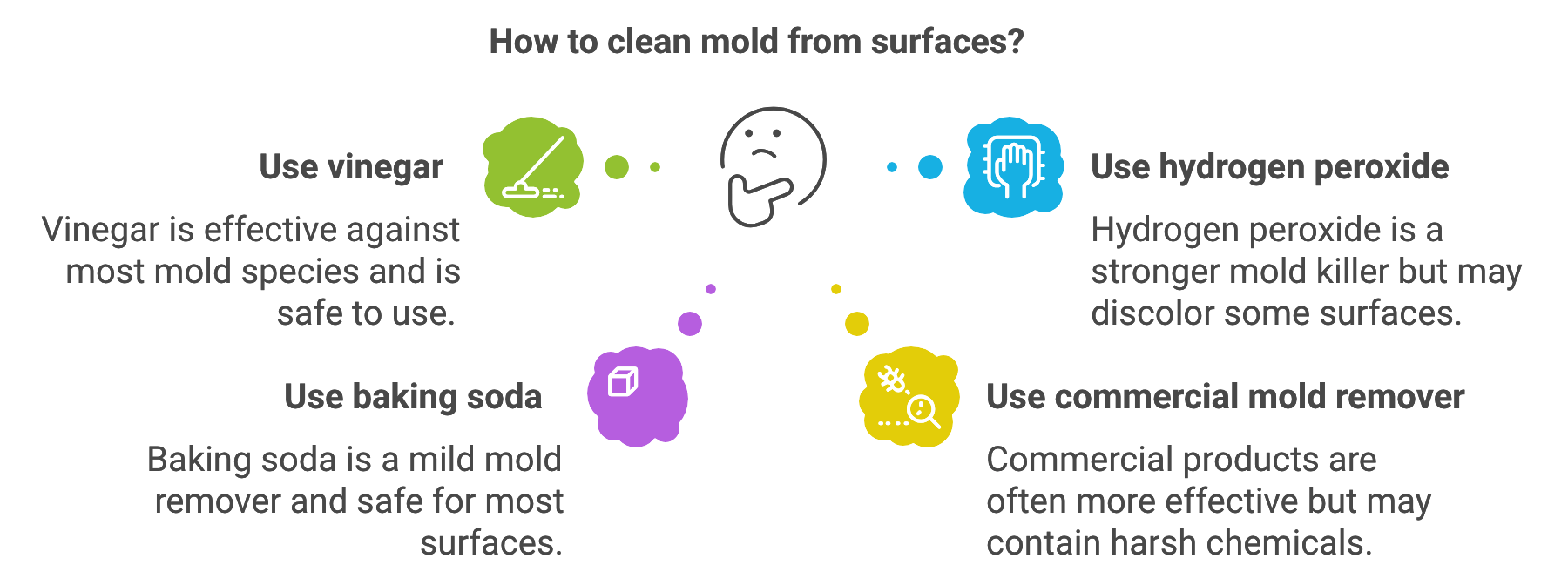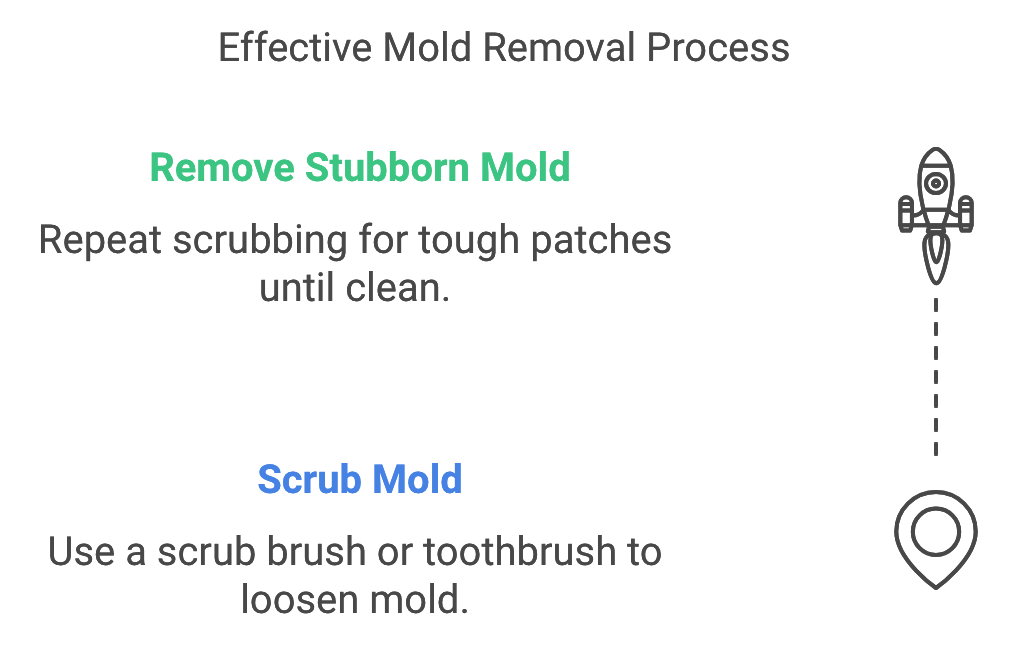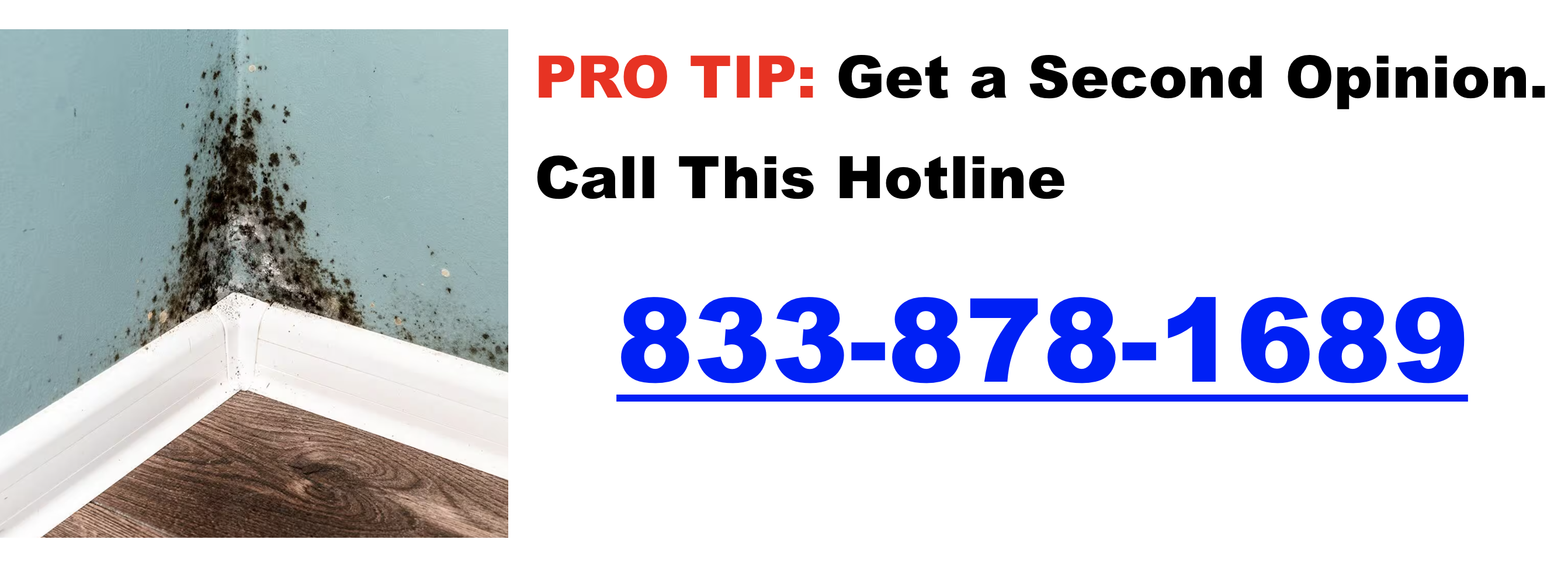Say Goodbye to Window Sill Mold with These Expert Tips
Dealing with mold around window sills is a common issue that can lead to health risks and damage if not addressed. This guide will explain why mold develops on window sills, how to safely clean and remove it, and what steps you can take to prevent it from returning.
Get To The Root of the Problem: Mold Growth
Click here for my favorite method of removing mold from caulk
- Moisture is the Enemy: Mold thrives in damp environments, and excess moisture from condensation or leaks provides the perfect conditions for mold growth.
- Condensation: A Common Culprit: Condensation forms when humid indoor air meets cooler window surfaces, especially during colder months. The temperature differential causes moisture to condense on the glass. This issue is compounded by high indoor humidity, which is caused by everyday activities like cooking, showering, and even breathing, particularly in poorly ventilated spaces. Older, single-pane and poorly insulated double-pane windows are more prone to condensation due to their inability to maintain a warm interior glass surface.
- Leaks: A Direct Pathway: Damaged seals or caulking around windows can allow water intrusion, leading to mold growth. Renters should check for leaks from pipes or cracks in the foundation, especially in basement suites, where moisture issues are more prevalent.
Check the Exterior of Your Windows
An often overlooked step in preventing window condensation and mold is inspecting the outside of your windows. Check that the exterior caulking around your window frames is intact and in good condition. Over time, caulking will often crack, peel, or deteriorate, allowing water to seep and contribute to excess moisture and mold growth on the interior sills.
To check the caulking:
- Walk around the outside of your windows and visually inspect the seals for any gaps, cracks, or missing sections.
- Reapply or replace the caulking if you notice any damage. Use a high-quality, weather-resistant exterior caulk to create a watertight seal — you can look into 3M 5200 or similar to prevent moisture from entering your home.
Taking Action: Cleaning and Removing Mold
- Safety First
Before beginning any mold remediation, protect yourself by wearing gloves, an N95 mask, and safety goggles to minimize inhalation or contact with mold spores and harsh cleaning agents.
- Initial Prep
Start by wiping away loose dust and debris from the window sill with a damp cloth. Carefully dispose of the cloth to prevent mold spores from spreading.
Choosing Your Weapon: Cleaning Solutions
- Natural Options:
- Vinegar Solution: Some advocate for using 100% vinegar to keep its potentcy, however if the smell is a concern you can mix 50-50 vinegar & water in a spray bottle. Spray on the moldy area, let it sit for about an hour, and then wipe clean with a dry cloth. This solution is gentle yet effective for most surfaces.
- Hydrogen Peroxide Solution: Prepare a 50/50 mix of hydrogen peroxide and water. Apply to the moldy area, let it sit for an hour, and then wipe clean. This method is safe for wood and penetrates porous surfaces effectively.
- Baking Soda Paste: Mix a cup to half a cup of baking soda with water to create a paste. Apply the paste to the affected area, allow it to dry, and then wipe it off with a dry cloth. Baking soda works well on a variety of surfaces, including wood.
- Stronger Solutions:
- Bleach: While bleach can effectively kill mold, it is unsuitable for all surfaces and can produce hazardous fumes when mixed with other chemicals. Use bleach cautiously and only in well-ventilated areas.
- Borax: Borax is an effective mold killer as well but handle carefully due to its toxicity. Mix it with water to create a paste similar to the baking soda example. Apply it to the mold, let it sit for 10-15 minutes, then scrub it off.
- Commercial Mold Removers: Products like RMR-141 Disinfectant, Clorox Tilex Mold and Mildew Remover, or CLR Mold & Mildew Stain Remover offer powerful and fast-acting solutions for mold removal.
Scrubbing Away the Mold
After applying a cleaning solution, let it sit for 10-20 minutes, scrub the area gently with a scrub brush or an old toothbrush. For stubborn patches, repeat this process as needed.
Step-by-Step Guide to Removing Mold on Window Sills
Dealing with mold on window sills requires careful attention to safety and technique to ensure it’s removed effectively and prevented from coming back. Follow this step-by-step guide:
Step 1: Gather Your Supplies
- Protective gloves
- N95 mask
- Safety goggles
- Cleaning solutions (white vinegar, hydrogen peroxide, baking soda, or commercial mold remover)
- Spray bottle or bowl.
- Scrub brush or old toothbrush
- Damp cloths and paper towels
- Bucket of clean water

Step 2: Ensure Safety First
- Wear protective gear like an N95 mask, and safety goggles.
- Ventilate the area using a fan to ensure good airflow & open the windows.
Step 3: Prepare the Area
- Remove items from around the window sill to avoid contamination.
- Wipe away any loose dust and debris with a damp cloth and throw it away immediately to prevent spore spread.
Step 4: Apply the Cleaning Solution
- Choose your cleaning solution:
- White vinegar solution: Can either be 100% vinegar or mix 50-50 parts vinegar and water.
- Hydrogen peroxide solution: Mix a 50/50 solution of hydrogen peroxide and water.
- Baking soda paste: Create a cleaning paste with baking soda and water to form a paste.
- Commercial mold remover: Follow the manufacturer’s instructions for use.
- Spray or apply the solution generously to the moldy area and let it sit for 10-15 minutes to penetrate and kill the mold.
Step 5: Scrub the Mold
- Gently scrub the area with a hard bristled scrub brush or an old toothbrush to loosen and remove the mold.
- Repeat, if necessary, for stubborn patches until all visible mold is removed.

Step 6: Rinse and Clean
- Wipe the area with a damp cloth or a throw-away sponge remove any residue from the cleaning solution and mold debris.
- Dispose of cleaning materials properly to prevent the spread of mold spores.
Step 7: Dry the Area Thoroughly
- Dry the window sill completely using paper towels or a clean cloth. Ensuring the area is dry is crucial to prevent mold regrowth.
Step 8: Implement Preventative Measures
- Control indoor humidity using a dehumidifier or running exhaust fans in moisture-prone areas like kitchens and bathrooms.
- Improve airflow by opening windows regularly or using fans.
- Inspect and repair window seals to prevent water intrusion. Recaulk or replace damaged windows as needed.
- Clean window sills regularly with a mild detergent or vinegar solution.
Step 9: Monitor for Recurrence
- Keep an eye on the area for any signs of mold regrowth.
- Address any underlying issues like leaks or high humidity promptly to maintain a mold-free environment.
Keeping Mold at Bay: Preventing Regrowth
- Humidity Control is Key: Keep indoor humidity levels between 30% and 50%. Use dehumidifiers or exhaust fans in moisture-prone areas like kitchens and bathrooms. Even opening windows for an hour a day can help reduce indoor humidity.
- Boosting Air Circulation: Enhance airflow by using fans and opening windows when possible (considering heating costs).
- Window Maintenance Matters: Inspect and repair any leaks or damaged seals around windows to prevent water intrusion. Recaulk or replace windows if needed. Due to their design, sliding windows are particularly prone to mold growth, which can trap moisture in crevices.
- Cleanliness is Your Ally: To prevent mold from re-establishing, clean window sills routinely with a mild detergent or vinegar solution.
- Address Root Causes: Investigate and resolve underlying moisture issues which can come from things like leaky pipes, cracks in the foundation (water coming up through the floor or through the foundation during rain storms especially) or improperly vented appliances.
Additional Tips and Considerations
- Mold-Killing Primer: For persistent mold problems, consider repainting the window frames with a mold-killing primer to deter future growth.
- Professional Help: If mold covers a large area or you suspect black mold, call a mold remediation service for safe and thorough removal.
- Document Everything: Renters should document mold issues with photos for tenancy records or potential arbitration.
- Winter Protection: During colder months, use window insulation film or shrink wrap to reduce condensation and create a barrier between warm indoor air and cold window surfaces.
- Why Your Septic Tank Smells When It Rains (and What to Do About It)
- How to Handle Water-Damaged Wood in Your Home or Business
- How to Prevent and Remove Mold from Pillows: A Complete Guide
- Why Is My Carpet Always Wet? A Step-by-Step Guide to Identifying the Source of Moisture
- Signs of Septic System Failure and What It Means for Your Basement


